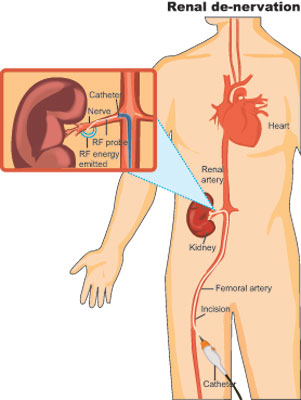Live: Pioneering medical operations
View(s):Kumudini Hettiarachchi reports on ‘biodegradable’ stenting, renal de-nervation (RDN) and Patent Foramen Ovale (PFO) Closure procedure that were performed for the first time in Sri Lanka at Durdans Hospital and relayed to an international
conference in Colombo simultaneously
Two sites across town but many interactive “live” medical procedures, believed to be firsts in Sri Lanka. With the Sri Lanka Heart Association, under President Dr. S. Narenthiran and Organising Chair Dr. Naomali Amarasena, as the catalyst, the “sites” were the Cinnamon Lakeside Hotel in Colombo where the prestigious Sri Lanka Interventional Meeting was on and the Cath Lab of Durdans Hospital, Colombo 3, where patients benefited from these free procedures on May 4 and 5.

Graphic by M. Jayasurita
As the procedures got underway, with local and foreign teams working in tandem, and the delegates from across the world at the meeting all eyes, interaction came in the form of robust question and answer sessions.
The first live procedure on the agenda was the ‘scaffold’. This is the deployment of a ‘biodegradable’ stent to overcome heart-vessel blocks which could lead to heart attacks and death. Although widely used abroad, the biodegradable stents were used for the first time in Sri Lanka during the live workshop on May 4.
With the “temporary task” of a stent being to expand the plaque-ridden vessel and let it get back its original shape, to allow the usual flow of blood, there are some disadvantages of using metal stents, as done in Sri Lanka so far. The complications that could arise are the rejection of this foreign body in the form of the metal stent by the patient’s body and the patient having to be on high medication to prevent blood-clots forming, MediScene learns.
If a new stent needs to be inserted as blocks can recur (re-stenosis or re-narrowing of a blood vessel restricting blood flow) in earlier stented areas, the medical team faces issues, a Heart Association spokesperson said. “Therefore, metal stents are not the ideal.”
However, all these problems can be overcome with biodegradable stents — like a temporary scaffolding we put up to get a job done after which it is dismantled – as they are made of polymers and dissolve into carbon dioxide and water after about six months.
Next came ‘renal de-nervation’ (RDN), said the spokesperson, explaining that this catheter-based procedure was performed on a patient who had treatment-resistant hypertension (high blood pressure). The hypertension could not be controlled even with maximum medication.
Carried out under local anaesthesia, an electrode-tipped catheter, under fluoroscope guidance, was sent through the femoral artery into the renal artery. Thereafter, the catheter sent low-level radio-frequency energy through the renal artery to ablate or destroy the renal nerves around it. With the application of radio-frequency ablation to the nerve receptors in the renal artery which is responsible for treatment-resistant hypertension, the spokesperson said that recovery would follow in about three months.
The final live feed to the meeting from Durdans was the Patent Foramen Ovale (PFO) Closure procedure which can be performed under ultrasound guidance.
Pointing out that PFO Closure is carried out to prevent recurrent strokes in young people triggered by a hole in the inter-atrial septum, the spokesperson said that a simple device was used to plug the hole. The inter-atrial septum separates the heart’s right and left atria.
The patient is put under general anaesthesia and the device, a wire mesh made of nickel and titanium alloy, within a catheter was inserted through the large vein in the wrist to the hole in the heart. Once the device was released onto the hole, it took its shape and effectively plugged it, the spokesperson added.
The scaffold procedure was performed on four male patients; the renal de-nervation on two middle-aged females; and the PFO Closure on two young female patients by local Interventional Cardiologists supported by Cardiologists from Germany and India who are authorities on these procedures.
Follow @timesonlinelk
comments powered by Disqus


